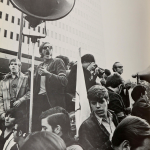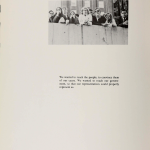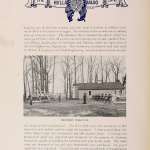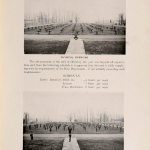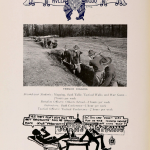Enjoy this post by Katherine Budinger, one of our Special Collections Freshman Fellows for the 2021-2022 academic year!
Hello! I am Katherine Budinger, and I have dedicated my time over the past year to the Johns Hopkins Yearbooks. The Freshman Fellows program has truly been a highlight of my first year at Hopkins (or ‘The Hopkins’ as it was referred to before World War II) and I could not be more thankful for the time I have spent on this project.
When I was faced with the task of actually creating a tangible project rather than simply flipping through the yearbooks in search of fun facts and stories, I turned to my background in creative writing. I used the stories and information I uncovered in the yearbooks in order to craft fictional tales. Those stories were mainly of the people who crafted the yearbooks, or those who were featured in them.
I stuck to years that were particularly rich with inspiration or significant in some way to the history of Hopkins. For example, the 1970 yearbook is composed almost entirely of photographs and collages, which initially seemed like a challenge since most of the details from the other yearbooks are buried in their writing. However, 1970 was the year that women were first admitted to Hopkins as undergraduates, and ‘Hoppies’ took to the streets of Baltimore and Washington to protest the war in Vietnam. The yearbook doesn’t shy away from commenting on these subjects, even if it is largely through black and white photos; students are shown flooding the quads with signs, anti-Vietnam War banners hung on the President’s lawn, a picture of a pig next to that of a police officer. Thus, on account of the strong presence of student feeling, this particular yearbook ended up being one of my personal favorites with which to work.
Once I had written various pieces, I pulled relevant images directly from the yearbooks and paired them with the stories to form a pseudo-yearbook that spans the 126 years of the yearbook’s life. In some cases I took entire pages, particularly the first page of each yearbook which I placed before the story of that year as a sort of visual introduction. I also pulled in a few paragraphs from the yearbooks themselves in order to give context to my stories; specifically, there is a paragraph from the 1943 Autumn yearbook describing the hardships faced when attempting to create a yearbook during a war, and two from the 1970 yearbook discussing the first female students. In many cases, I reference specific photos in the yearbooks, which of course make appearances alongside their related stories. For example, there is a photo from the 1918 yearbook of the Hopkins’ The Reserve Officers’ Training Corps practicing digging trenches as part of their training for World War I. This served as the entire inspiration for my story for the year, and thus it was a necessity that the photo be included.
With all my materials gathered, it was simply a matter of turning on some music and putting all of the pieces together! If you would like to give it a read, you may do so here: https://jscholarship.library.jhu.edu/handle/1774.2/66944.
This project became an incredible way to gain an insight into the history of Hopkins and its student population. It would not have been possible without Heidi Herr, Jim Stimpert, and Special Collections! I feel more in touch with the university and its history now that I have told the stories of its past students, which is a wonderful feeling.
If you would like to take a look at the yearbooks for yourself, they can be found at https://jscholarship.library.jhu.edu/handle/1774.2/37597 or in the Special Collections reading room!

